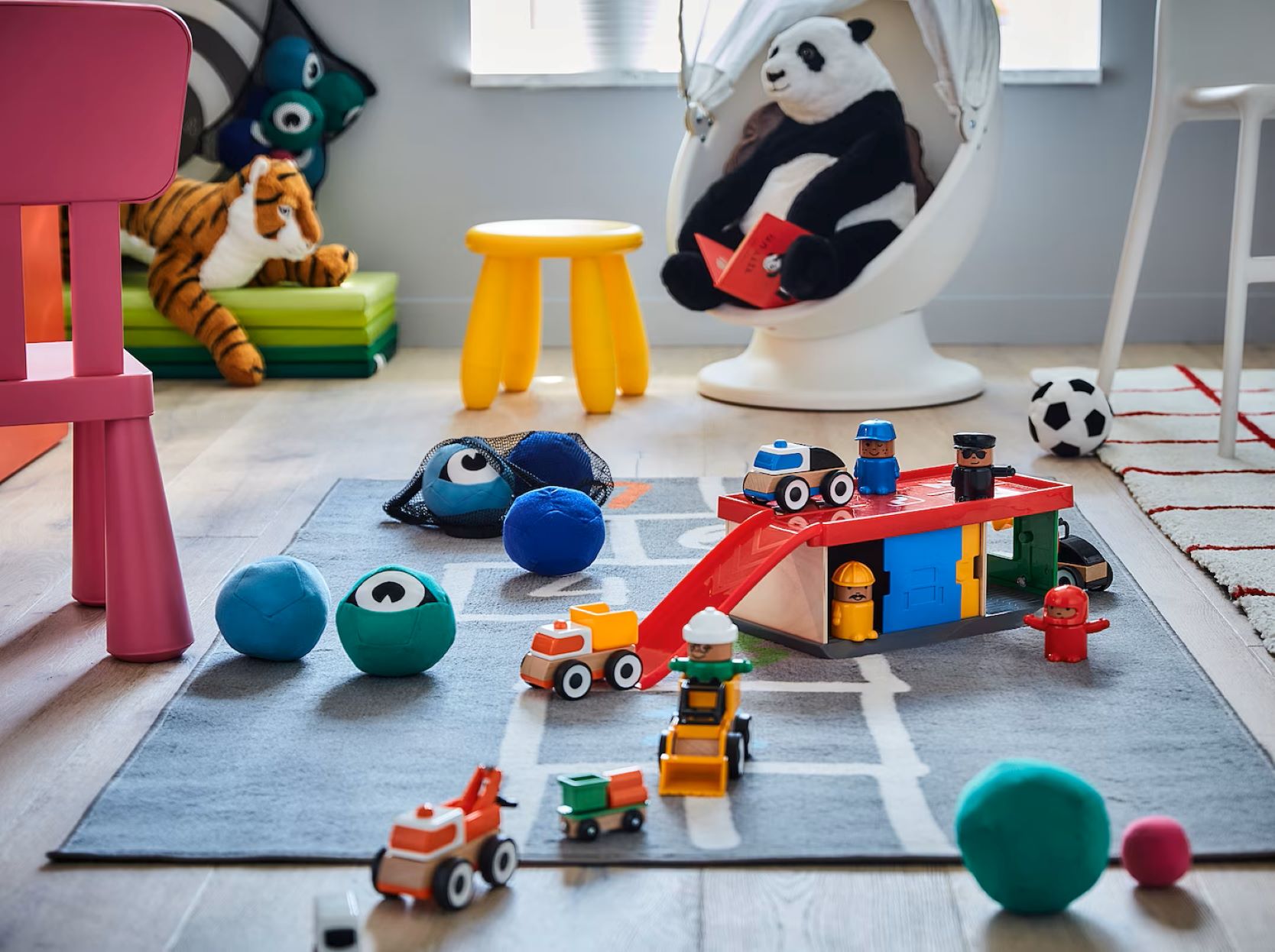
Toys hold a special place in our hearts, offering both childhood memories and endless hours of entertainment. They come in all shapes, sizes, and varieties, from classic dolls and action figures to high-tech gadgets and educational games. But did you know that toys have a fascinating history and surprising facts behind them? In this article, we’ll delve into 19 toy facts that will amaze and delight you. From the invention of iconic toys to the impact they have on child development and even their influence on popular culture, there’s much to discover about these beloved playthings. So, sit back, relax, and prepare to uncover some intriguing secrets about the toys that have brought joy to generations of children around the world.
Key Takeaways:
- The Rubik’s Cube, LEGO, and Monopoly are iconic toys with fascinating origins, from accidental inventions to record-breaking sales, shaping the world of play for generations.
- From the accidental invention of the Slinky to the nationwide craze sparked by Cabbage Patch Kids, toys have a rich history filled with surprising stories and timeless appeal.
The Rubik’s Cube was invented by Ern? Rubik.
The Rubik’s Cube, a 3D combination puzzle, was invented in 1974 by Hungarian architect Ern? Rubik.
The LEGO Group is the largest toy manufacturer in the world.
Founded in 1932, the LEGO Group has become the leading toy manufacturer globally, famous for its interlocking plastic bricks.
The Slinky was invented by accident.
The Slinky, a popular toy consisting of a precompressed helical spring, was invented by Richard James, who accidentally dropped a tension spring and observed its unusual movements.
The Etch A Sketch was introduced in 1960.
The Etch A Sketch, a mechanical drawing toy, was first introduced by the Ohio Art Company in 1960 and has since become an iconic classic.
Monopoly is the best-selling board game of all time.
Originally patented in 1904, Monopoly has achieved tremendous success and popularity, with over 275 million sets sold worldwide.
The first Barbie doll was launched in 1959.
Created by Ruth Handler, the first Barbie doll made its debut at the New York Toy Fair in 1959 and has since been an influential icon in the fashion doll industry.
The Super Soaker was invented by NASA engineer Lonnie Johnson.
Inspired by his work on high-pressure systems for spacecrafts, Lonnie Johnson created the Super Soaker, a popular water gun that revolutionized outdoor water play.
Mr. Potato Head was the first toy advertised on television.
Introduced in 1952, Mr. Potato Head became the first toy to be advertised on television and has become a beloved children’s toy ever since.
The Teddy Bear was named after President Theodore Roosevelt.
The Teddy Bear’s name originated from an incident involving President Theodore Roosevelt, who refused to shoot a captured bear during a hunting trip.
The Frisbee was originally a pie tin.
The Frisbee, a popular flying disc toy, was inspired by the pie tins of the Frisbie Pie Company, which college students in the 1940s would throw around for fun.
Hot Wheels were introduced by Mattel in 1968.
Launched by Mattel in 1968, Hot Wheels quickly became a beloved toy line featuring die-cast toy cars and tracks.
The Game Boy was released by Nintendo in 1989.
Nintendo’s handheld gaming device, the Game Boy, was introduced in 1989 and became a game-changing innovation in the world of portable gaming.
The yo-yo is believed to be one of the oldest toys in the world.
With a history that can be traced back thousands of years, the yo-yo is considered one of the oldest known toys, enjoyed by people across different cultures.
The Play-Doh compound was originally created as a wallpaper cleaner.
Play-Doh, a popular modeling clay for children, was initially invented as a cleaning product for removing coal residue from wallpaper.
The Nerf ball was invented by accident.
The foam-based Nerf ball, a staple of outdoor play, was originally created as a safer alternative to traditional hard balls after a misfired foam ball inspired the idea.
Cabbage Patch Kids sparked a nationwide craze in the 1980s.
In the 1980s, Cabbage Patch Kids became a phenomenon, causing a frenzy among parents trying to secure one of the highly sought-after dolls for their children.
Silly Putty was discovered during World War II.
Engineers in search of a synthetic rubber compound stumbled upon Silly Putty, a stretchy and bouncy toy material that became a beloved novelty item.
The Easy-Bake Oven has been a popular toy since 1963.
Introduced in 1963, the Easy-Bake Oven has allowed generations of children to enjoy the magic of baking their own miniature treats with a working oven.
The Pogo Stick was invented in 1919.
Created by George Hansburg in 1919, the Pogo Stick quickly gained popularity as a fun and exciting way for children to bounce and play.
Conclusion
These 19 fascinating toy facts highlight the incredible impact that toys have on our lives. From their rich history dating back thousands of years to the latest technological advancements, toys continue to bring joy, educational value, and imaginative play to people of all ages. Whether it’s a classic teddy bear or a cutting-edge robot, toys have the power to ignite our creativity, stimulate learning, and foster emotional development.
As we dive into the vibrant world of toys, it is evident that they hold a special place in our hearts and memories. Their timeless appeal transcends generations, allowing us to relive cherished childhood moments and create new ones. From enhancing cognitive skills to encouraging social interaction, toys play a crucial role in shaping our growth and well-being.
So, next time you come across a toy, remember the incredible power it holds. It’s not just an object but a gateway to a world of possibilities, imagination, and endless fun.
FAQs
Q: When were the first toys invented?
A: The first toys were believed to be created more than 4,000 years ago, with evidence of dolls and animal figurines found in ancient civilizations such as Egypt and Mesopotamia.
Q: Are toys only meant for children?
A: No, toys can be enjoyed by people of all ages. Many adults collect toys as a hobby, and there are even specialized toys designed for adult audiences, such as puzzles and model kits.
Q: How do toys benefit child development?
A: Toys facilitate cognitive, physical, and emotional development in children. They promote problem-solving skills, fine and gross motor skills, social interaction, and imaginative play.
Q: What are some popular types of toys?
A: Popular types of toys include action figures, dolls, puzzles, board games, construction sets, and electronic toys. The choices are vast, catering to different interests and age groups.
Q: How have technology advancements affected toys?
A: Technology has greatly influenced the toy industry, leading to the development of interactive and educational toys. Robotics, virtual reality, and augmented reality have revolutionized the way toys engage and educate children.
Q: Are there any collectible toys worth a lot of money?
A: Yes, certain limited edition or rare toys can become highly valuable in the collectibles market. Factors such as condition, exclusivity, and demand play a role in determining their worth.
Toys have captivated imaginations for centuries, evolving from simple playthings to intricate designs. From the classic Rubik's Cube to the enduring popularity of Barbie dolls, toy history is filled with fascinating stories and surprising origins. Whether you're a fan of nostalgic favorites like Cabbage Patch Kids or modern marvels like the Super Soaker, there's no denying the impact toys have had on our lives. If you're curious about other toy-related topics, consider exploring the world of Bakugan toys, delving into the miniature delights of Mini Brands, or discovering the best executive desk toys to keep your mind sharp.
Was this page helpful?
Our commitment to delivering trustworthy and engaging content is at the heart of what we do. Each fact on our site is contributed by real users like you, bringing a wealth of diverse insights and information. To ensure the highest standards of accuracy and reliability, our dedicated editors meticulously review each submission. This process guarantees that the facts we share are not only fascinating but also credible. Trust in our commitment to quality and authenticity as you explore and learn with us.


